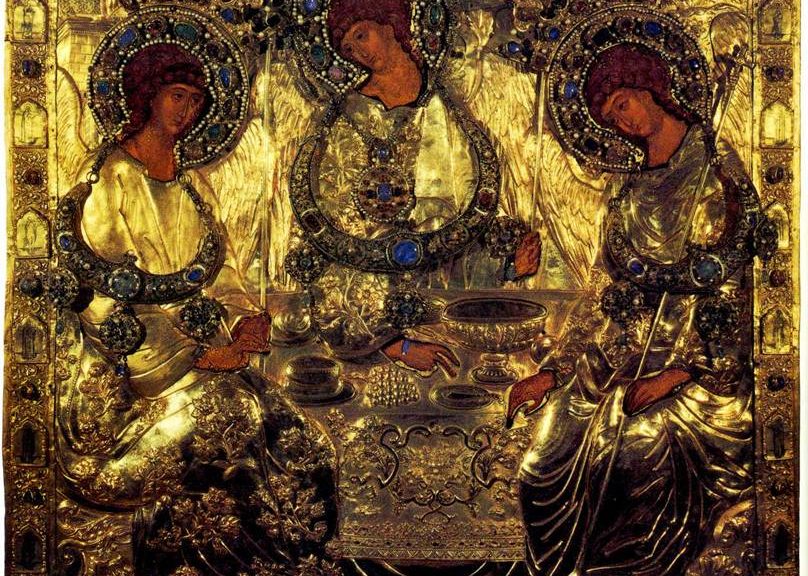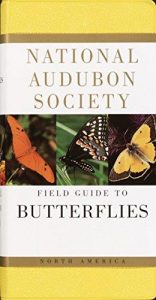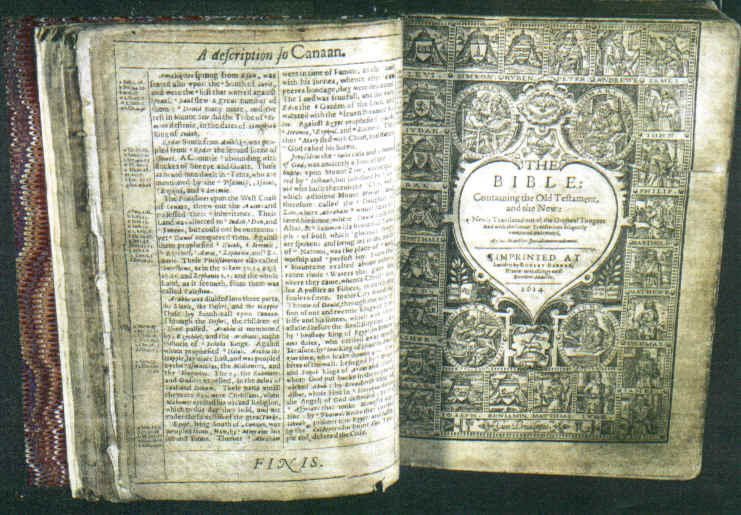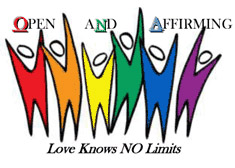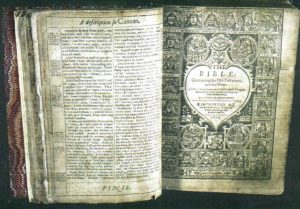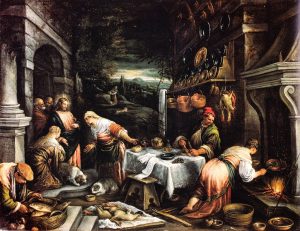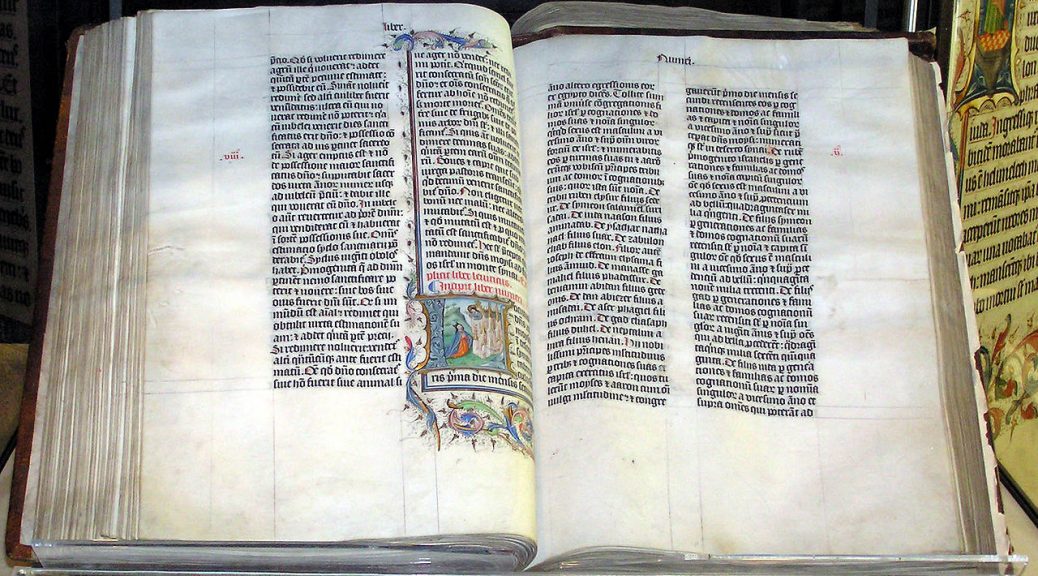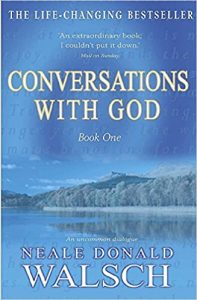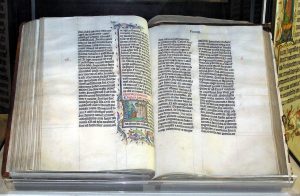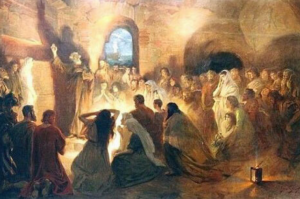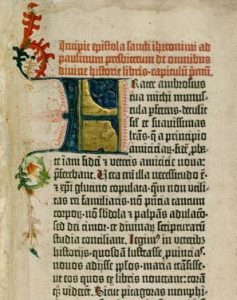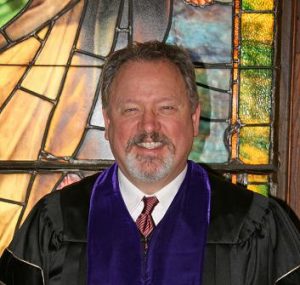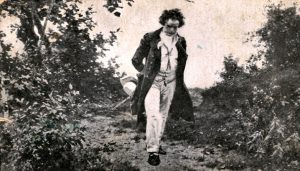A Sermon by the Rev. Dr. Arthur M. Suggs
Preached on Trinity Sunday, May 27, 2018
(Memorial Day Weekend)
Christianity Is a Latecomer to Trinitarianism; if Three Equals One, Anticipate Some Problems.
Several things are going on this Sunday. The obvious one is Memorial Day Weekend. A little less obvious is that this is also Trinity Sunday, the final Sunday of the church year, beginning in Advent and then concluding today.
The rest of the time from tomorrow up to the first Sunday of Advent in December is unimaginatively called Ordinary Time.
An even less obvious thing is that for a certain minister originally from Indianapolis, to- day is Race Day. Couldn’t care less? Okay, that’s me.
The sermon has two parts to it: The first is academic, at least a bit. I’ll try not to allow it to be too boring. The second part of the sermon is a pair of stories, one from history, another is personal. Hopefully, I can bring these two together.
Concerning Trinity Sunday, trinities are actually found in a lot of places, not just in the Christian version of it.
For example, six centuries before Christ, Plato envisioned divinity as an interflow, an interplay of truth, beauty, and goodness. I try to reflect that in the prayer for the dedication of the offerings almost every Sunday, thanking God for truth, beauty, and goodness.
There are many others. Within the pantheon of the Greeks, there was a trinity at the top. Same thing for the Romans; same thing for Egypt. The Germanic tribes had trinities; so did the Persians.

Christianity was simply the latest version of trinity. However, when you were going around saying, “Three equals one,” pretty much you should anticipate some problems. Judaism, out of which Christianity emerged, was clearly monotheistic at this time.
But the Christians had a problem in that dozens of places in the New Testament, things are worded in ways that very strongly lead the reader toward trinitarian thinking.
For example, we are instructed at the end of the gospel to baptize “in the name of the Father and of the Son and of the Holy Spirit.”
Or Paul says bless the people in these words, “The grace of our Lord Jesus Christ, the love of God, the fellowship of the Holy Spirit be with you this day and forevermore.”
And Jesus talked a lot about God and his Father and then also about the giving of the Son.
Anyway, by 451, the church had it all settled. Christianity would be technically monotheistic, one God presenting in three different ways, and they used a technical term that I won’t dwell on, but it’s called homoousias, ousias meaning “essence” or “being” and homo meaning “same.” But God presented in these three different ways but one essence, one being behind it all.
The Trinitarian Formula Is a Must for New Clergy. A Deeper Answer Comes with Eastern Religions.
I was satisfied with this answer for a long time, for the vast majority of my career, because after all, centuries of work went into it. The church struggled with this for centuries, and then finally in 451 settled upon that, and this understanding is venerated to this day: the Apostle’s Creed and the Nicene Creed.
Brand-new clergy are generally enjoined to write a statement of faith, and it had better be in a trinitarian formula: Here’s what I believe about God; here’s what I believe about Jesus; here’s what I believe about the Holy Spirit. Break from that form at your peril when you are in the process of being ordained.
However, I did feel that a deeper answer came when trinity met the Eastern religions. The Tao, for example. There’s one Tao, yet it is in all things. It is in nature, human beings, sentient beings. It is in the All. Buddha Nature is in all things. It’s in the Buddha. But it’s also in all people, all sentient beings. It’s in all created order.
It was the Hindus, actually, who spelled it out a lot more. They had their one big god that they called Brahman. But then there was a trinity: There is Brahman the creator and then there is Vishnu and Shiva, Vishnu being the preserver and Shiva being the destroyer. Vishnu being order, and Shiva being chaos. And so things are created, they last for a while, they dissolve, they die, they get recycled. It’s whether you’re a human being or a washing machine.
It’s pristine and brand-new but has its life cycle and returns. Brahman creates, Vishnu preserves, Shiva destroys.
But underneath those three are three more and underneath those nine are bunches more until you have one and then you have three and then you have nine and then you have 10,000. Then at the end is the infinite, and they gave a name to it, the Atman, which is also Brahman, to be found in all things.
So here’s a quote for you: Brahman is homo- ousias with the Atman. Now I had found it in all things.
Is this what Jesus was hinting at when he prayed that “They might all be one even as I and the Father are one”? Is this what it means when a tripartite human being — body, mind, and soul — is made in the image of God? Is this what it means when God is in all things, Christ is in all things, the Spirit is in all things?
Trinity Sunday Has Memories of the Biggest Split Ever in the Church — the Great Schism.
Okay, that’s the lecture. Now that I’ve nearly lost all of you, thanks for staying with me so far.
Now a pair of stories, one from history and one personal. I can’t think of Trinity Sunday without also thinking about the biggest split that the church has ever had. It happened in the year 1054, called the Great Schism, and it had to do with trinitarian understanding. It had to do with a lot of other things as well, but that was one of the big ones. I want to tell you just a bit of that story. It’s actually pretty interesting.
The Eastern church was based in Constantinople, now Istanbul. The Western church was based in Rome, of course.
In Rome, there was Pope Leo IX, and over in Constantinople there was the Ecumenical Patriarch by the name of Michael Cerularius. There was growing distrust, growing differences between the Western center and the Eastern center, mostly having to do with theology, which I’ll touch on in a minute. But it also had to do with language; one was Greek, the other was Latin.
Furthermore, it had to do with some political differences, the way in which they organized themselves, and it also had to do with geography. One was European, and one was more Middle Eastern or even on the border of Asia. So anyway, that happened in 1054.
The year before, in 1053, Pope Leo IX, feeling full of himself and knowing that he was the supreme ruler of all churches across the entire globe, learned that there were Greek churches in southern Italy, using the Greek version of the mass rather than the Latin mass. So he ordered all those Greek churches throughout southern Italy to convert to the Latin mass. Never mind that they didn’t speak Latin, they spoke Greek.
As anybody with an ounce of common sense and any experience in church life knows, that didn’t go over well. These churches immediately cried foul, not to Rome but to Constantinople and told Michael Cerularius what Pope Leo had done, and wasn’t that awful? Then Cerularius immediately closed down all of the Latin churches in Constantinople.
It reminds me of schoolyard arguments. It’s that level of quarrelling going on between the two heads of churches.
Year 1054 Arrives when Rome Goes to Constantinople. Two Big Issues — Bread and Argument.
Leo IX sends a delegation to Constantinople with two purposes: One is to inform Michael Cerularius that he must bend the knee, that he must submit to the authority of the Pope under all conditions. The delegation also had one other task, and that was to argue for money because Leo IX was waging a war for some reason in Rome, and he needed more money for it.
Here are the two things: Bend the knee and submit to the authority of Pope Leo IX, and by the way, could you come up with some cash to cover Romish expenses for a war against upstarts.
So what do you think that Michael did?
Find out (and read the personal story, plus the 2 ‘morals of the story’) …
Download or View the full sermon PDF.
Featured image: The Trinity as it could have been seen before 1904 (a photomontage). The painting is covered by the riza and coated with a layer of drying oil. Troitsa Collage, 2008, by монтаж участника shakko. Creative Commons, Wikimedia.

